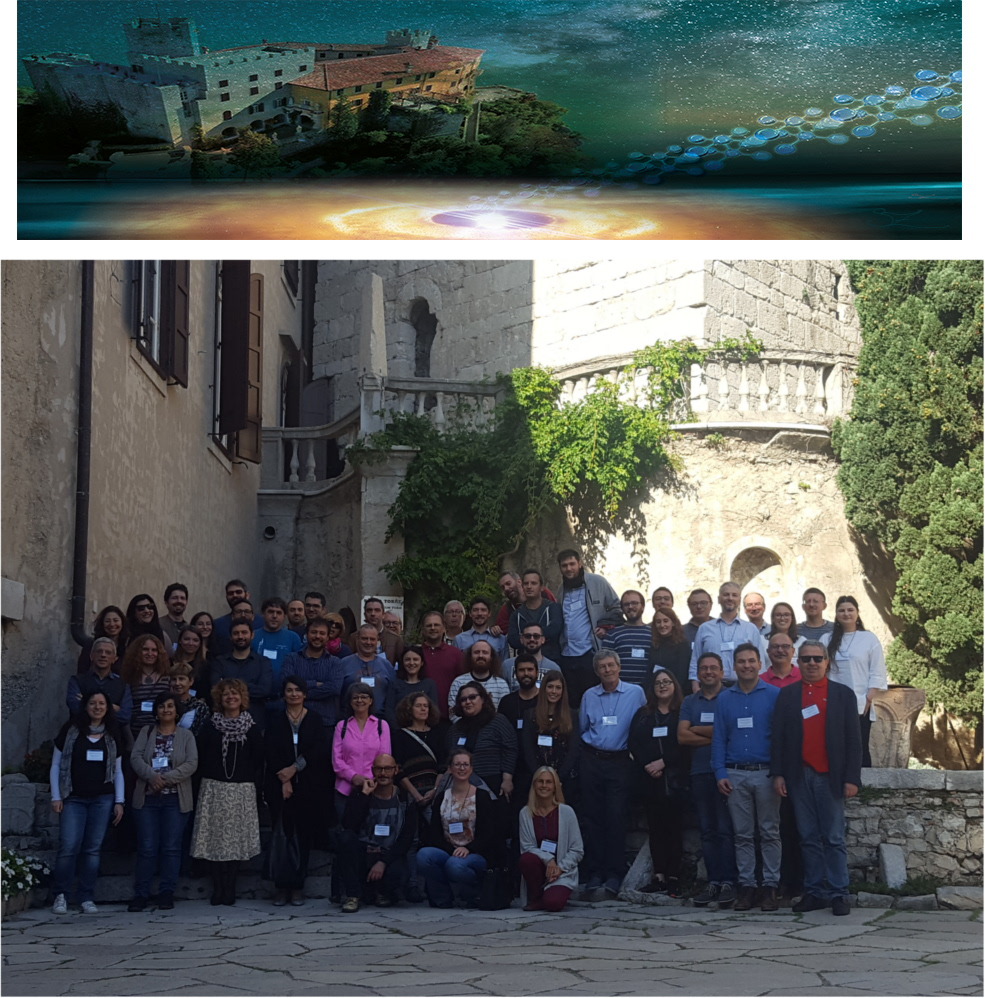Speaker
Description
The VIRTIS infrared spectra of the surface of comet 67P/Churyumov-Gerasimenko (67P/CG) display a wide absorption band in the range 2.8-3.6 μm, which has been associated to the presence of organic compounds [1, 2]. However, several instrumental effects have hindered, so far, the detailed interpretation of the molecules and compounds contributing to this band. In this work we first revise the calibration of the VIRTIS-M-IR instrument [3, 4] onboard the Rosetta spacecraft with the aim to improve the detection of low-contrast spectral features and the radiometric accuracy.
Multiple observations of the nucleus during the inbound part of 67P/CG’s orbit (August-September 2014) are processed to derive an average reflectance spectrum to minimize the Poissonian noise. This refined analysis reveals a complex internal structure within the wide 2.8-3.6 μm absorption feature. Individual sub-features can be unambiguously identified after correction. The strongest ones are centered at 3.1, 3.3, 3.38, 3.42, 3.47 µm.
Two main aspects of the refined average spectrum corroborate the so called “comet-asteroid continuum” hypothesis, blurring the distinction between different classes of objects:
1) clear evidence of aliphatic compounds (CH2 and CH3) is given by the presence of the 3.38, 3.42 and 3.47 μm absorption bands. These features have never been observed on a cometary nucleus before. The spectral properties of the aliphatic signatures have striking similarities to that of the Insoluble Organic Matter extracted from primitive Carbonaceous Chondrites;
2) the overall shape of the spectrum presents similarities with some main belt and outer solar system objects, in particular, the presence of absorptions at 3.1 μm and in the spectral range 3.3-3.4 μm.
Moreover, the aliphatic features observed on the 67P spectrum are compatible to typical aliphatic observed in the Interstellar medium.
These findings allow a better understanding of the formation and evolutionary processes by suggesting a genetic link between comets, other pristine solar system materials, and interstellar dust grains (Raponi et al., Science, submitted).
Acknowledgements
We thank the following institutions and agencies for support of this work: Italian Space Agency (ASI, Italy) Centre National d'Etudes Spatiales (CNES, France), DLR (Germany). This work takes advantage of the collaboration of the ISSI international team “Comet 67P/Churyumov-Gerasimenko Surface Composition as a Playground for Radiative Transfer Modeling and Laboratory Measurements”, number 397.
References:
[1] Capaccioni et al. (2015) - Science, 347.
[2] Quirico et al. (2016) - Icarus, 272, 32-47.
[3] Coradini et al. (2007) - Space Sci. Rev., 128, 529.
[4] Filacchione (2006) - PhD thesis.

